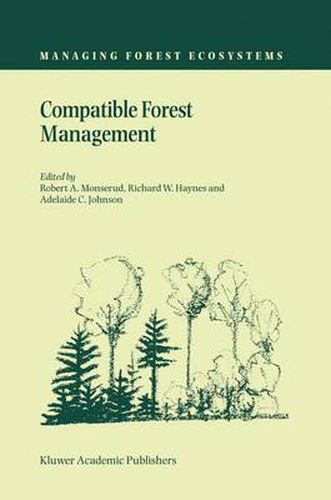Readings Newsletter
Become a Readings Member to make your shopping experience even easier.
Sign in or sign up for free!
You’re not far away from qualifying for FREE standard shipping within Australia
You’ve qualified for FREE standard shipping within Australia
The cart is loading…






This title is printed to order. This book may have been self-published. If so, we cannot guarantee the quality of the content. In the main most books will have gone through the editing process however some may not. We therefore suggest that you be aware of this before ordering this book. If in doubt check either the author or publisher’s details as we are unable to accept any returns unless they are faulty. Please contact us if you have any questions.
Public debate has stimulated interest in finding greater compatibility among forest management regimes. The debate has often portrayed management choices as tradeoffs between biophysical and socioeconomic components of ecosystems. This work focuses on specific management strategies and emphasizes broad goals such as biodiversity, wood production and habitat conservation while maintaining other values from forestlands desired by the public. Commodity production (timber, nontimber forest products) and the other forest values (biodiversity, fish and wildlife habitat) can be simultaneously produced from the same area in a socially acceptable manner. Based on early-21st century research in the Pacific Northwest, the text shows there are alternatives for managing forest ecosystems that avoid the divisive arena of either-or choices. Much of the work discussed in this book addresses two aspects of the compatibility issue. First, how are various forest management practices related to an array of associated goods and services? Second, how do different approaches to forest management affect relatively large and complex ecosystems?
$9.00 standard shipping within Australia
FREE standard shipping within Australia for orders over $100.00
Express & International shipping calculated at checkout
This title is printed to order. This book may have been self-published. If so, we cannot guarantee the quality of the content. In the main most books will have gone through the editing process however some may not. We therefore suggest that you be aware of this before ordering this book. If in doubt check either the author or publisher’s details as we are unable to accept any returns unless they are faulty. Please contact us if you have any questions.
Public debate has stimulated interest in finding greater compatibility among forest management regimes. The debate has often portrayed management choices as tradeoffs between biophysical and socioeconomic components of ecosystems. This work focuses on specific management strategies and emphasizes broad goals such as biodiversity, wood production and habitat conservation while maintaining other values from forestlands desired by the public. Commodity production (timber, nontimber forest products) and the other forest values (biodiversity, fish and wildlife habitat) can be simultaneously produced from the same area in a socially acceptable manner. Based on early-21st century research in the Pacific Northwest, the text shows there are alternatives for managing forest ecosystems that avoid the divisive arena of either-or choices. Much of the work discussed in this book addresses two aspects of the compatibility issue. First, how are various forest management practices related to an array of associated goods and services? Second, how do different approaches to forest management affect relatively large and complex ecosystems?